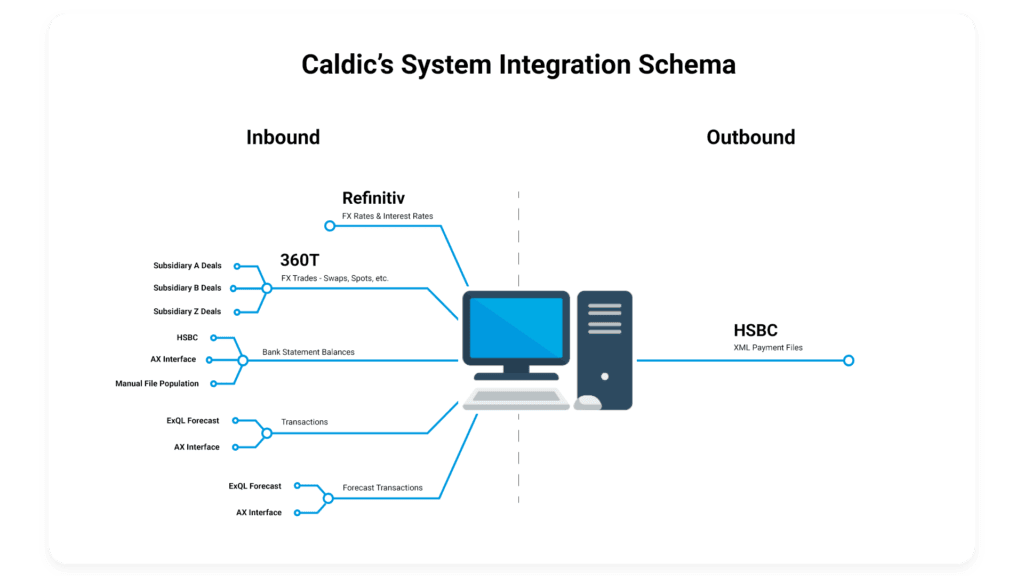
Watch the footage of the live case study presentation below.
When manual processes across the financial function meet consistent growth and increasing complexity, treasury teams often look to the TMS market for a ready solution. Dublin-based international aircraft leasing firm Aergo Capital saw exactly what it needed in Salmon Software, as its finance and funding leaders explain.
Aergo Capital, founded in 1999, is an established aircraft lessor specializing in sourcing, remarketing, and selling aircraft. Aergo manages a portfolio of 234 assets, serving 75 airlines across 46 countries. With a senior management team boasting a collective industry experience of over 290 years, Aergo Capital offers a rich history of industry leadership. Aergo’s deep technical expertise and a commercial team with a global presence allows the company to provide unparalleled excellence in the aviation sector.
There’s a point in the life of a business when, as everything seems to be slotting into place with its core activities, its supporting units need a boost to help take it all to the next level. With Aergo Capital, its largely manual treasury processes were nearing the limits of acceptability, and a big change was in the air.
Indeed, with manual payments for all loans, managing Aergo’s treasury operations required the attention of multiple personnel every month. Calendar reminders were used by the finance team to track its debt servicing obligations each month, following which, every payment had to be manually entered on to Barclays banking portal and then manually entered again into a spreadsheet to be uploaded into the accounting system and posted to the GL. The same labour-intensive drudgery applied to booking interest accruals at each month-end.
With more than 100 legal entities within the Aergo group, constant daily cashflows between these group legal entities were a feature of the business. This too demanded more manual time and effort to log on to the Barclays portal, draft each and every payment, carry out the two-step authorisation process, and then book it into the accounting system.
On the funding side, this tale of process inefficiency was repeated. Manual filing systems on a shared drive provided access to all the schedules and documentation for each transaction, but covenant compliance, amongst other things, had to be tracked manually. What’s more, the system was far from ideal in terms of data sharing between Aergo’s various functions, with more time-consuming manual intervention required.
“It’s why, due to our growth over the past number of years, we knew we needed the help of a good TMS,” declared Paul Laszzalette, the company’s Financial Controller. “It was not an overnight realisation”, added Jerry Buhna, Assistant Vice President Funding, just a gradual recognition that the company’s financing activities were nearing what he terms “critical mass” and the awakening to the fact that benefits of having a TMS at this stage of the business’ development were now outweighing the cost and effort of deploying it.
Right choice
With the anticipation that Aergo’s growth would continue at a similar rate over the next 24 months at least, Buhna says the team took a proactive approach of selecting and implementing a TMS sooner rather than later, in order to be adequately prepared for future growth.
Seizing the moment, Aergo kicked off its selection process, reaching out to contacts within the aircraft leasing and broader aviation industry to seek recommendations. Doing so provided a general guide to the vendor market, so that the approach to each provider with its RFI, and later RFP, already had a degree of focus.
The path from here led to Salmon Software as the most likely candidate. Aergo naturally favoured the vendor’s Irish heritage. But, says Buhna, industry colleagues had also boosted the system’s provenance in the wider aviation industry, and in-depth conversations with existing Salmon aircraft-leasing clients further demonstrated to Aergo that the system had the necessary capabilities. It helped in no small way that Laszzalette could draw upon his positive experience with Salmon’s TMS in his previous employ at a Dublin-based low-cost airline group.
Scoping success
Automation of Aergo’s funding processes were key to the success of this project, says Buhna. It also places the Salmon TMS as “the single source of truth” for information such as amounts paid down on each transaction, loan schedules, and the related documentation for each deal and facility. “Having a system in place which provides data integrity minimises the potential for human error; in the simplest of terms, it ensures that everything is how it should be for a company of Aergo’s magnitude.”
Obviously, automation and strengthening of controls were also required on the finance side. But Laszzalette comments that when project scoping got underway with Salmon, it was vital that the vendor could appreciate and understand the nuanced requirements that every company and function has of a TMS. In fact, he says, “throughout the scoping sessions with Salmon, it was very apparent that there were additional functionalities and workarounds for us in terms of servicing some of our internal debt financings”.
Salmon’s consultants worked with Aergo to help build out a full set of requirements. Buhna describes this stage as a “slow and organic process of discovery”. It involved the Aergo team explaining how its own processes need to operate, and how these fit into its role as a lessor and asset manager, with Salmon then explaining how its solution directly meets these requirements, and where appropriate workarounds could be devised, “all with the aim of moulding the system to meet our needs”.
Helping hands
Because the Salmon TMS is modular, Aergo has not had to roll out the entire suite in one ‘big bang’. By taking on each component at a time, it is able to concentrate on what it needs, when it needs it. This brings focus to the implementation project. Indeed, with “a regular package” designed to tackle the “regular issues” of an expanding business, Buhna reports that the implementation has “flowed well” to date. And with most of the functionality already in production, full go-live is expected in early 2024.
The practical work on Aergo’s side has been split between Buhna and Laszzalette, with Buhna taking his first lead role on a project of this kind, revealing that “it’s all been very new to me”. Salmon’s role in the smooth progress to date has been key, he asserts. “One of the biggest benefits for us has been how responsive Salmon has been to all of our requests and helping us through the implementation process.”
That said, reaching the stage it is at now – around 95% complete – has presented various challenges. But Buhna accepts that, given the complexity of the project, this is not unusual. And with Salmon talking him through the process step by step, the team were able to overcome every obstacle along the way.
As part of the workload, additional conversations with Aergo’s primary bank, Barclays, were necessary. The team at Barclays played a pivotal role in the overall success of the implementation, providing valuable insights and support. Salmon had already worked with the bank, a familiarity Buhna describes as “an added bonus”. This ensured the highest level of integrity and robustness of all connectivity. In addition, Aergo’s IT service provider, Atoo Information Technology, was also instrumental in navigating the complexities of the project. Buhna comments: “Trying to manage three external parties while also managing the internal teams, to ensure the implementation process is constantly progressing, is demanding”.
Evolving needs
In operation, the system works with all data sitting within the Salmon software. Information can be created within Salmon, which is then automatically pushed, via Secure File Transfer Protocol (SFTP), to Barclays. The bank is then able to process it as required, returning (via SFTP) the relevant information to the TMS. “It’s all very much interconnected,” says Buhna.”
Despite the solid progress to date, there is no illusion within Aergo that once the TMS is live it signals the end of the project. “We have a good understanding of how all the issues will be tackled, and how our processes will be improved, but we still have work to do,” observes Buhna.
Indeed, the team looks on it as a two-step implementation process. So while Aergo will have some of its challenges solved with this first phase, the next, for example, will see the finance team connecting Salmon to the accounting system for activities such as reporting. One module that Laszzalette reports as having been earmarked for deployment in phase two is bank reconciliations.
Look to the future
With “plenty of room for extra functionality” and obvious capacity to scale the system as Aergo grows, Buhna reveals that one of the higher aims of the project has been to future-proof its investment in technology. The initial brief demanded everything that was needed to meet Aergo’s current challenges, but also those that it felt it may need over the next few years as the business grows and the environment in which it operates changes. Recalling conversations with another Salmon client – a larger player in the aircraft leasing industry – Laszzalette says that whenever a new idea was presented to the vendor, there was always a willingness to work with and meet those needs. He confirms that the vendor is on course to maintain its reputation for collaboration and support.
With phase one almost complete and go-live imminent, Buhna has an informed impression of what his team’s life will be like once it is fully up and running. “From the requirements of the funding team, it is just as we expected. In fact, it has exceeded my expectations because whenever there isn’t a clear solution for something, there’s always a good workaround that Salmon and ourselves can come up with.”
On the finance side, Laszzalette is equally happy to verify project success. “We’ve carried out a lot of testing for much of the functionality, and it is all doing exactly what we want it to do.” With at least one other TMS implementation under his belt, he is acutely aware of the value a project of this nature can bring to the business. The essence of that – a huge amount of time and effort saved – is going to place Aergo in a much stronger position as it rises to the challenges and opportunities presented by the next stage of its development.
By Tom Alford, Deputy Editor, TMI
First published by TMI: https://treasury-management.com/articles/time-to-fly/
Press Releases













